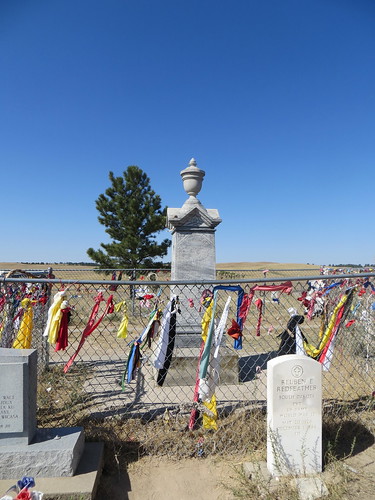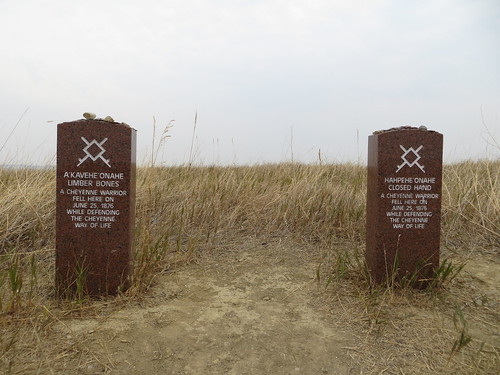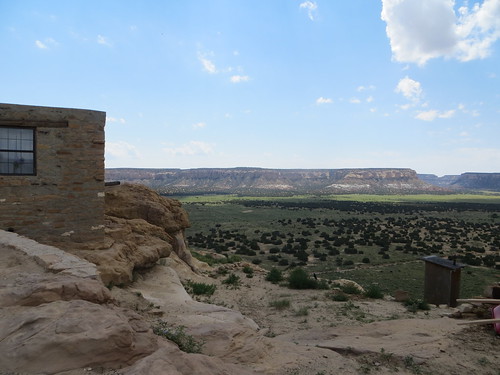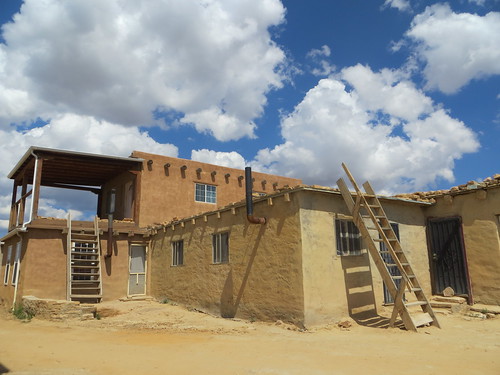I have just been reading about Isaiah Berlin, a philosopher who pointed out that total liberty for some must necessarily mean constraint for others, that "freedom for the pike is death for the minnows". That holds true for the history of the United States. A country founded under the tenet of "Liberty for All", the expansion and consolidation of the States under its white male oligarchy came at the price of the people who were already living on the land. Treaties guaranteeing Indian safety were broken, entire communities were forcibly relocated and the plains buffalo were systematically exterminated to deprive the Plains Indians of their food source and way of life. It is a period in history that most Americans prefer to forget; and most shamefully, the President who was directly responsible for the Cherokee Trail of Tears is still the face of the $20 bill.
 |
| Wounded Knee graveyard |
In 1890, while trying to disarm Lakota Indians on the Pine Ridge reservation in South Dakota, the US Army opened fire, killing men, women and children indiscriminately. The Massacre at Wounded Knee is memorialized with a marker and a graveyard at the site, neither of which were as informative as the people hanging around. A shaking alcoholic and a transsexual covered in burn scars were among those who shared various histories of Wounded Knee while trying to sell tourists cheap jewellery. Unemployment rates on the reservation hover between 80% to 90%, more than half of the residents are living under the federal poverty level, alcoholism and diabetes are rampant and residents have the lowest life expectancy in the country. The minnows may still be alive, but it's barely.
 |
| US graveyard at Little Bighorn with Custer's grave marked in black |
The Battle of Little Bighorn in 1876 was one of the few times that the minnows successfully routed the pikes. It is where Lt. Colonel Custer made his last stand, where he and 268 other US troops and Indian scouts were killed after an attack on the Lakota and Cheyenne Indian Village on the banks of the Little Bighorn river spectacularly backfired. Today, the battleground is empty, save for the stones marking where US troops and Indian warriors fell.
 |
| Markers at Little Bighorn battlefield |
Nearly 300 years before that battle, Indians in the Southwest were fighting the first colonial power to take their land - Spain. One of the most heinous examples of Spanish cruelty happened in one of the most beautiful areas of New Mexico.
 |
| View from Acoma Pueblo |
Many of the Acoma tribe still live in a village perched on a mesa plateau just west of Albuquerque, but back in 1599, the tribe was almost obliterated. Conquistador Juan de Oñate, retaliating for an earlier skirmish, killed hundreds of Acoma men women and children. He also ordered the amputation of every surviving, enslaved adult male's left foot. Somehow, Acoma Pueblo managed to reestablish itself after the massacre and still exists today, though with less than 10% of the tribe's original land.
 |
| Acoma Pueblo |










No comments:
Post a Comment